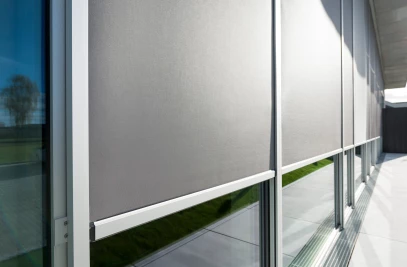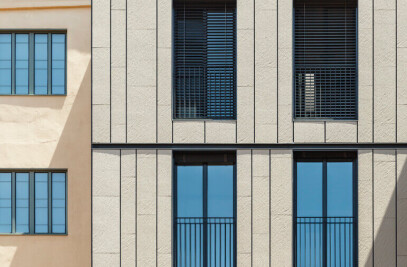L.E.FT Designs Vassar College’s Pratt House Center for Religious and Spiritual Life and Contemplative Practices
The New York- and Beirut-based architectural office L.E.FT, led by Makram el Kadi and Ziad Jamaleddine, has designed the re-imagination of Pratt House at Vassar College. The building, originally completed in 1915, was originally the home of the College’s warden, who oversaw student housing and the maintenance of campus residential buildings. This adaptive reuse project has converted the three-story, red brick former residence into a new center for the Office of Religious and Spiritual Life and Contemplative Practices (RSLCP), which serves twelve religious and spiritual student groups.


The transformed Pratt House serves as a catalyst for the RSLCP to move beyond the limitations imposed by a dichotomous religious-secular divide, and support students’ diverse identities to inclusively serve its community, both institutionally and spatially. In Pratt House’s renovated domestic spaces, the RSLCP’s constituents are able to practice tolerance and sharing through prayer and meditation, rituals of cooking and dining, and social gatherings.
From the beginning, the project was shaped by the desire for a communal spatial experience. Led by L.E.FT, the programming phase included a series of town hall meetings that brought together students, college faculty, staff, and administrators in design workshops and lectures on the history of shared religious buildings. “The conversations that resulted between the diverse and sometimes theologically-opposed participants were dynamic yet respectful, and helped formulate new interpretations of sacrality, spirituality, and iconography,” says Jamaleddine. The RSLCP’s spaces and programs were then designed to facilitate and reinforce the practices illuminated by these discussions and workshops.
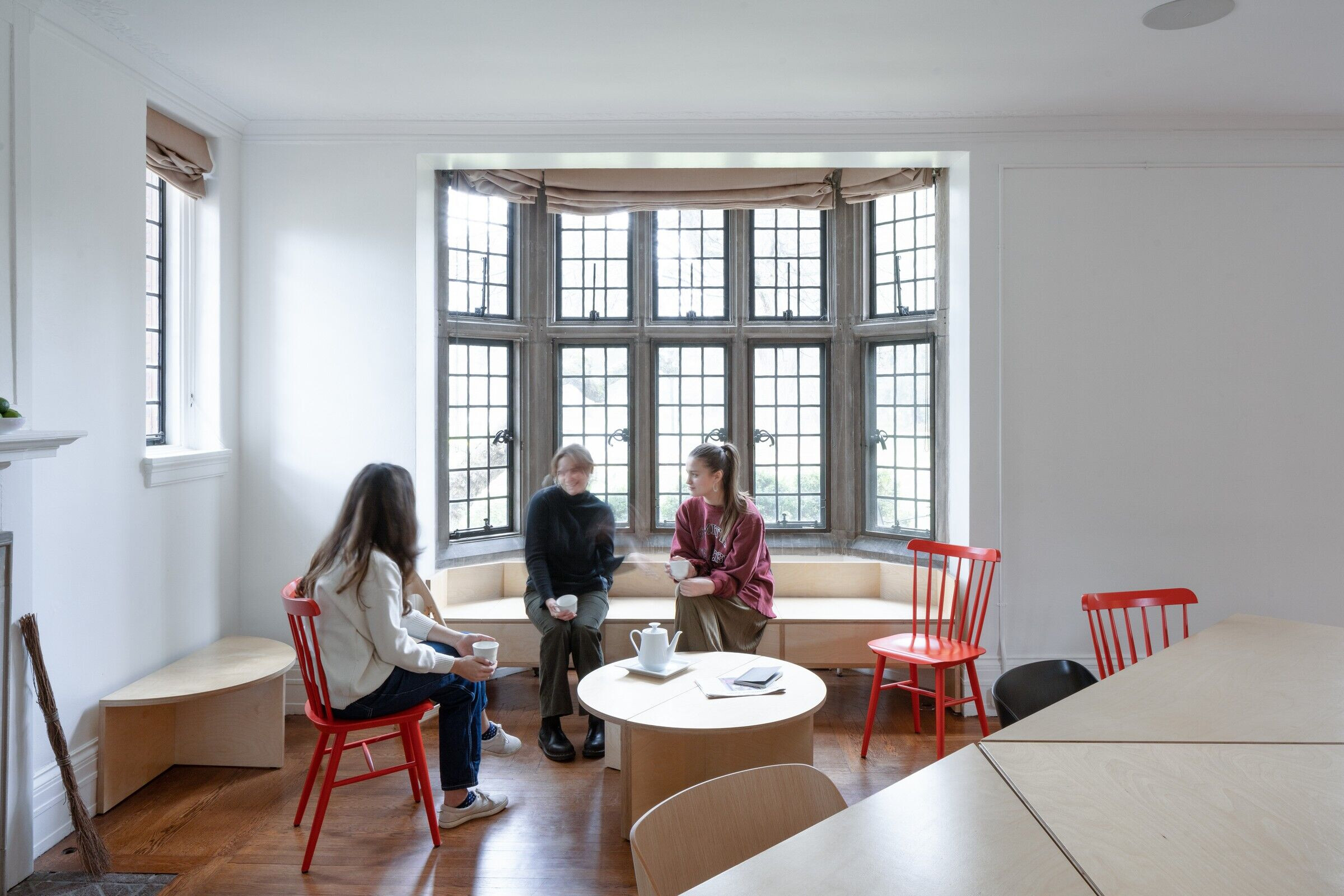
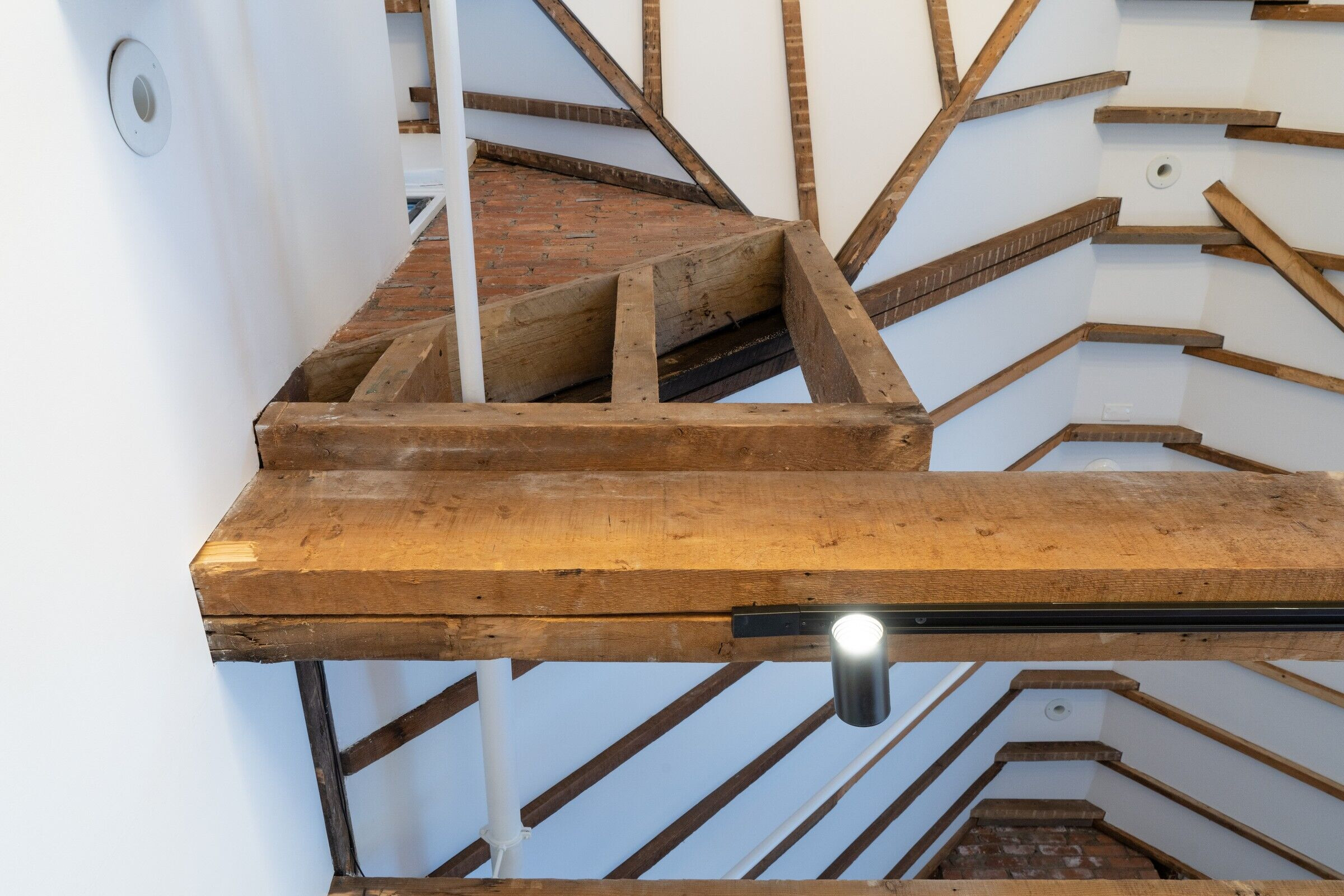
“The design’s primary strategy was one of un-doing,” notes Jamaleddine. Pratt House, originally designed by noted New York firm of York & Sawyer in a Gothic Revival style, had its interior architectural and tectonic elements reconfigured. The function of existing spaces were fundamentally transformed while minimizing physical alterations: the exterior was largely unchanged, unused building materials were salvaged and reused, and new interventions and furniture were aesthetically distinct from the former home’s traditional features.
Major interventions were both aesthetic and functional, and included the removal of the second floor slab, a new skylight, a new elevator shaft, and accessibility improvements.


On the building’s ground floor, which houses a kosher/halal kitchen and a cooking/eating/event space, the majority of existing partitions were retained. Walls in the kitchen were painted with a green chalkboard paint so that students could annotate menus, recipes, and events, notes Jamaleddine, and blue resin countertops and birch plywood cabinets provide visual contrast.
The first floor underwent more significant changes, with several new partitions and the removal of the floor slab above to create a double-height prayer/meditation room. A new staircase clad in birch plywood dominates one area of the space and leads to mezzanine level storage from the prayer meditation room. Other spaces on the first floor include a meeting room, an ADA ablution room, and offices for the RSLCP leadership. Finishes in these spaces pull from other areas of the building, with birch plywood on the walls of the meditation room and other spaces with millwork, blue resin countertops in the ablution basin, and two-tone blue mosaics in the ADA restroom.

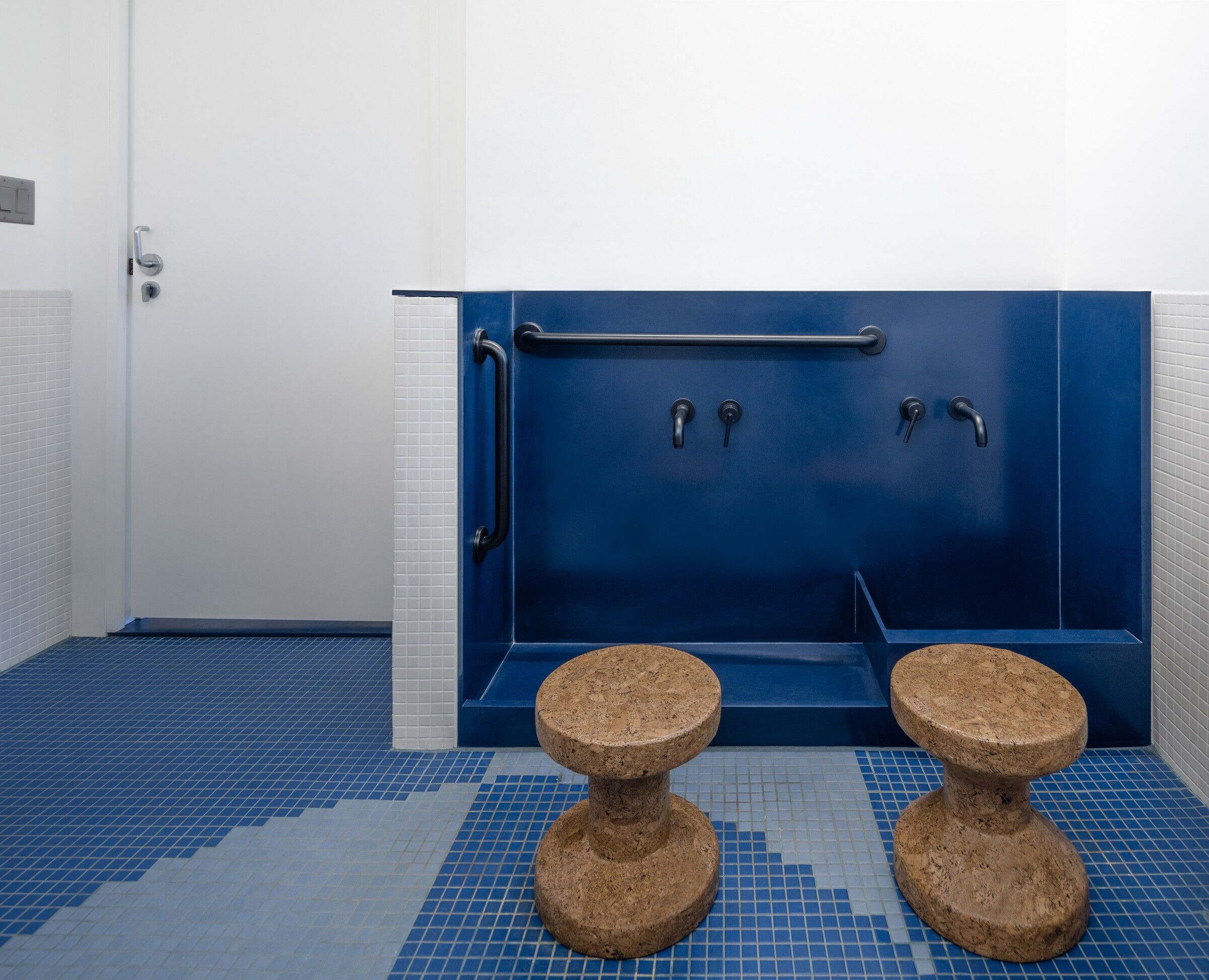
The removal of the first floor ceiling for a prayer hall was one of the most impactful alterations; the new shared space gained a more generous height, integrating the historic pitched roof and exposing its graphic wooden rafters. The new punched skylight provides natural ventilation and a glimpse of daily and seasonal weather changes. Additionally, the second floor’s existing one-step split level was incorporated into the existing stair, leveling the floor for wheelchair users. A desire for material and spatial economy drove the architectural strategy. Across the house, damaged floors were stitched with new wood planks only where necessary; the result, Jamaleddine explains, is “two colors of flooring: existing and new.” Similarly, structurally superfluous wood beams were identified during disassembly and reused to support the roof ridge and frame the openings of the prayer room’s new doors.
This approach was also extended to Pratt House’s exterior, where construction waste from previous college projects – from brick to bluestone – were then upcycled to construct a processional meditation labyrinth on the RSLCP’s outlying grounds.


To complement this acupunctural architectural method, multifunctional built-in components were designed to serve the liturgical needs of the RSLCP’s multiple religious communities. One such piece was a multi-denominational, multi-directional prayer carpet whose colorful geometric composition adapts to the diverse orientations necessary to perform prayers (Makkah, East, Jerusalem, etc.) and to varied forms of assembly (linear, circular, sitting, squatting, etc.). The built-ins also include the first Americans with Disabilities Act (ADA)-compliant ablution basin in the United States—a typology currently absent from published “secular” ADA codes.
An adaptable table system supports the varied communal religious feasts held at Pratt House, composed of reconfigurable units that provide a variety of table tops and seat capacities, from a large, square surface for food preparation to an extra-long Iftar dining table. A folding door system, perforated with a pattern showing the lunar phase calendar, opens and closes the kosher/halal kitchen based on religious seasons.
The overall architectural resolution is hybrid. Taking inspiration from the long tradition of reuse found in historical religious architecture, it transforms Pratt House’s structure into a layered condition of interwoven spaces and religious practices. The design also rearticulates traditional spatial practices in a contemporary language, meeting the needs of an ever-shifting socio-religious landscape.

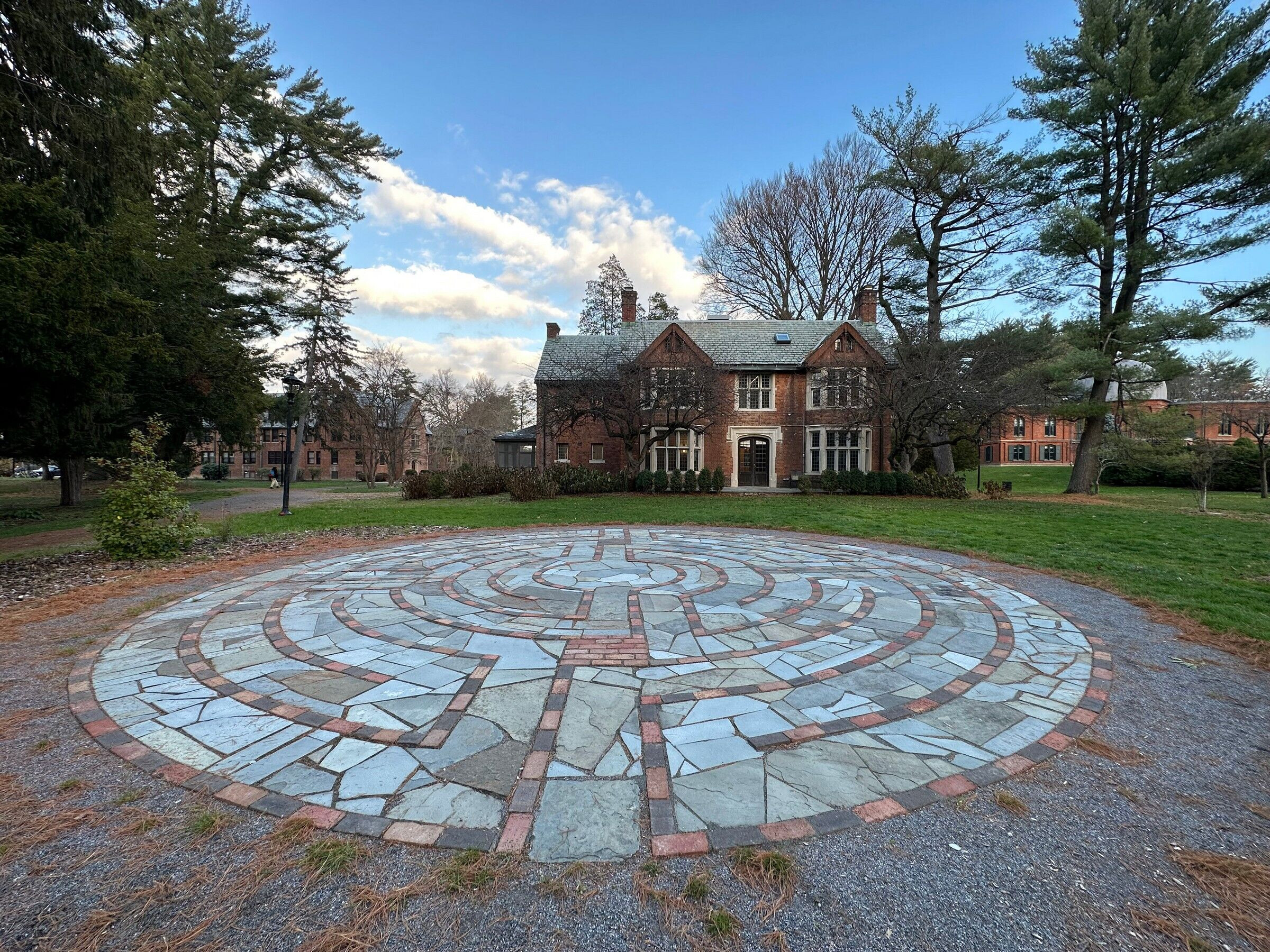
Team:
Architecture Design: L.E.FT llc
Engineer/Architect of Record: Murray Engineering PC
Landscape Architecture: L.E.FT llc with One Nature, llc
General Contractor: Consigli Construction, Co. Inc.
Millwork: Studio Multi llc & Ventures, Architectural Millwork and Cabinetry Group
Photo credit: Michael Vahrenwald ESTO































